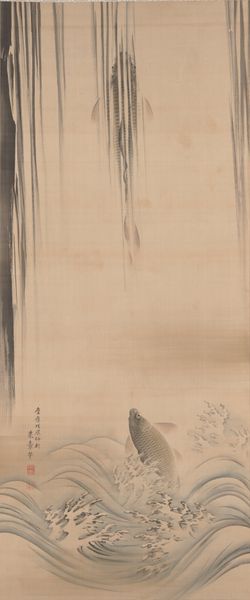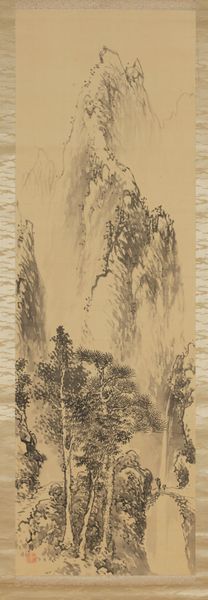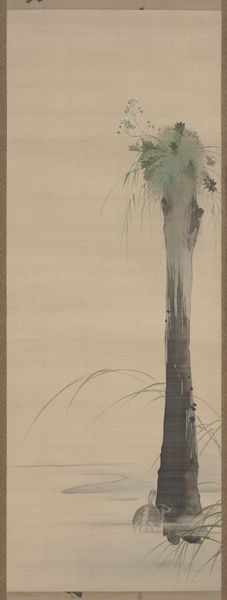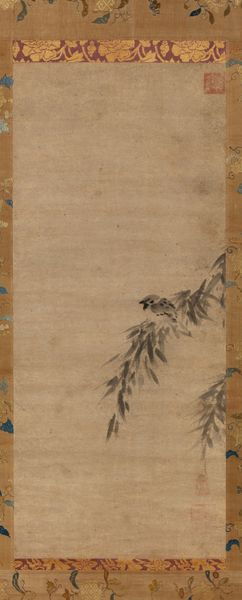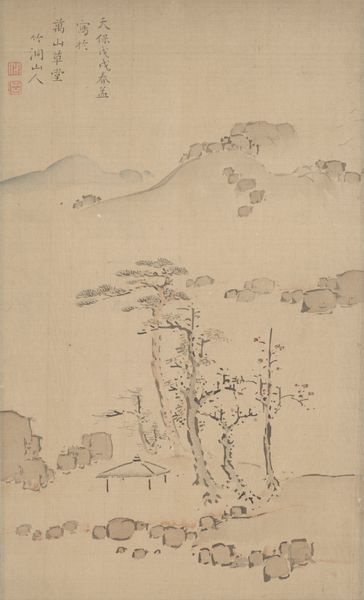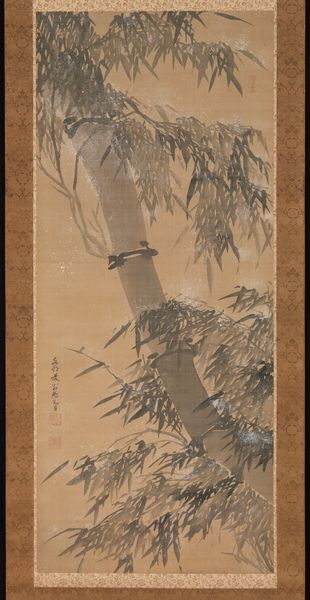
drawing, hanging-scroll, ink
#
drawing
#
ink painting
#
asian-art
#
landscape
#
japan
#
hanging-scroll
#
ink
Dimensions: 39 7/8 × 10 5/8 in. (101.28 × 26.99 cm) (image)71 7/8 × 12 in. (182.56 × 30.48 cm) (mount, without roller)
Copyright: Public Domain
Curator: Looking at this 19th-century hanging scroll, "Ri Haku (Li Bo) Viewing a Waterfall" by Tani Bunchō, the ink washes immediately give a sense of misty distance. What's your initial take on the work? Editor: A contemplative mood definitely settles in. It’s hard not to notice the intense contrast—the almost stark black ink against the lighter paper gives it a potent emotional punch. But what about Li Bo? Is it really about him or something bigger? Curator: The depiction of Li Bo is interesting when considering the Japanese appropriation of Chinese literati culture. Tani Bunchō, deeply embedded in Confucian ideals, positions the artist as someone in harmony with nature, a reflection of imperial aesthetics and patronage. The very materials—ink, paper, silk mounting—speak to a sophisticated system of craftsmanship fostered by specific socioeconomic conditions. Editor: I’m drawn to how Bunchō utilizes the landscape itself to underscore themes of isolation and reverence. The cascading waterfall isn't merely a scenic backdrop, it's almost a visual metaphor. We see it towering above Li Bo, dwarfing him, placing humanity within the sublime power of nature, so I think we should talk about the history. Who would have had access to such artistry at that time? Curator: Certainly, access to these works would have been exclusive. Scrolls like these, crafted with fine materials, were designed for display within elite settings. Considering Bunchō’s prominent position within the art world, his workshop would have managed specialized production of such artwork for those who shared particular taste cultures. It is an active conversation regarding the tensions surrounding cultural and economic accessibility to fine art, or so-called fine art, back then. Editor: Right, this wasn't art for the masses. The scale, too, is important. As a hanging scroll meant to be viewed privately, it fostered intimacy and a personal connection with classical ideals that were out of reach for most people, so to that end, does the art's process align with its final goals? Curator: Precisely! The physical process – the labor, sourcing the materials, applying the ink with skill – underscores a hierarchical social structure of artisanal creation and consumption. Every element reflects specific manufacturing conditions, challenging conventional ideas about spontaneous creation or aesthetic uniqueness. Editor: Thanks for unpacking so many important contextual elements. Looking at it all together now, I appreciate the multiple levels of dialogue that Bunchō has created. Curator: Indeed. Analyzing art in its material and historical context truly opens a more complete understanding.
Comments
No comments
Be the first to comment and join the conversation on the ultimate creative platform.
